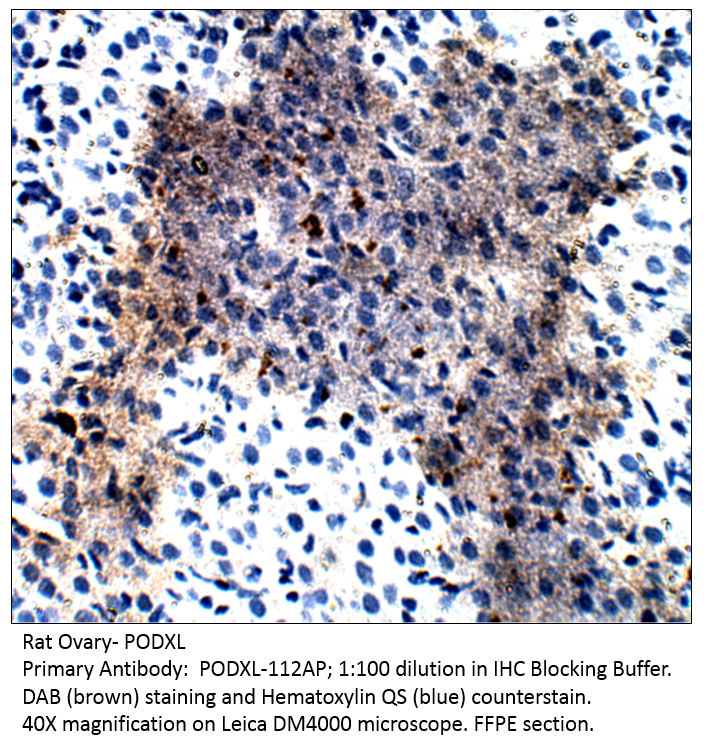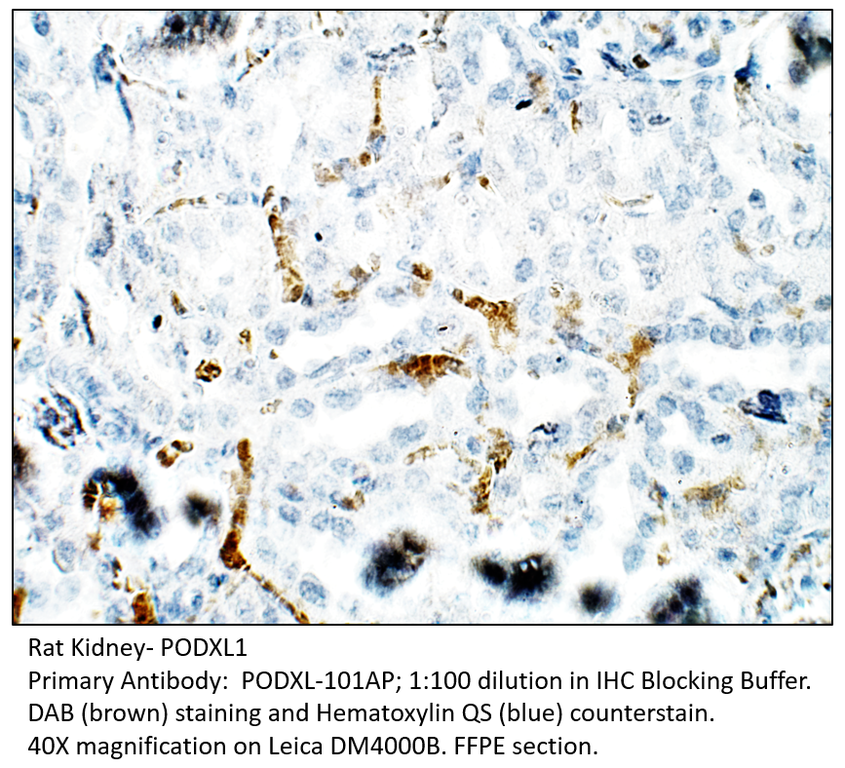Home page Primary Antibodies Neuroscience Bestrophin Antibody
Home page Primary Antibodies Signal Transduction Cell Adhesion PODXL Antibody
Home page Primary Antibodies Signal Transduction Cell Adhesion PODXL1 Antibody
Home page Primary Antibodies Signal Transduction Cell Adhesion Syndecan-1 Antibody
Home page Primary Antibodies Signal Transduction Cell Adhesion Syndecan-1 Antibody
Home page Primary Antibodies Signal Transduction Cytoskeleton / ECM Integrins FAK1 Antibody
Home page Primary Antibodies Neuroscience Cell markers & CAMs CD56 / NCAM Antibody
Home page Primary Antibodies Signal Transduction Cell Adhesion CD47 Antibody
Home page Primary Antibodies Signal Transduction Cytoskeleton / ECM Microtubules Phospho-Doublecortin Antibody
Home page Primary Antibodies Neuroscience Neurodegenerative Disease Alzheimer's Research MAPK2 Antibody
Accessories
| Product | Note | Status | Price | |
|---|---|---|---|---|
|
BEST1.3-FITC | |||
|
BEST1.3-BIOTIN | |||
|
P-BEST1.3 | |||
|
PC-BEST1 | |||
| Display accessory details | ||||
We also recommend
|
BEST-101AP
|
BEST-112AP
|
BEST-301AP
|
|
BEST-312AP
|
Browse these categories as well: Neuroscience, ECM Proteins, Cell Adhesion, Vision, Vision & Olfaction, Primaries
Accessories
| Product | Note | Status | Price | |
|---|---|---|---|---|
|
PODXL.112-FITC | |||
|
PODXL.112-BIOTIN | |||
|
P-PODXL.112 | |||
|
PC-PODXL | |||
| Display accessory details | ||||
We also recommend
|
PODXL-101AP
|
Browse these categories as well: Cell Adhesion, Diagnostic Markers, Extra Cellular Matrix, Surface Molecules, Cardiology, Primaries
Accessories
| Product | Note | Status | Price | |
|---|---|---|---|---|
|
PODXL.101-FITC | |||
|
PODXL.101-BIOTIN | |||
|
P-PODXL.101 | |||
|
PC-PODXL | |||
| Display accessory details | ||||
We also recommend
|
PODXL-112AP
|
Browse these categories as well: Cell Adhesion, Diagnostic Markers, Extra Cellular Matrix, Surface Molecules, Cardiology, Primaries
Accessories
| Product | Note | Status | Price | |
|---|---|---|---|---|
|
SYND1.112-FITC | |||
|
SYND1.112-BIOTIN | |||
|
P-SYND1.112 | |||
|
PC-SYND1 | |||
| Display accessory details | ||||
We also recommend
|
SYND1-101AP
|
Browse these categories as well: Cell Adhesion, Diagnostic Markers, ECM Proteins, Cell markers & CAMs, Neurogenesis & Plasticity, Invasion/microenviornment, B Lymphocytic Lineage, Lipids, Metabolism & Homeostasis, Metabolism, Primaries
Accessories
| Product | Note | Status | Price | |
|---|---|---|---|---|
|
SYND1.101-FITC | |||
|
SYND1.101-BIOTIN | |||
|
P-SYND1.101 | |||
|
PC-SYND1 | |||
| Display accessory details | ||||
We also recommend
|
SYND1-112AP
|
Browse these categories as well: Cell Adhesion, Diagnostic Markers, ECM Proteins, Cell markers & CAMs, Neurogenesis & Plasticity, Invasion/microenviornment, B Lymphocytic Lineage, Lipids, Metabolism & Homeostasis, Metabolism, Primaries
Accessories
| Product | Note | Status | Price | |
|---|---|---|---|---|
|
FAK1-Y-FITC | |||
|
FAK1-Y-BIOTIN | |||
|
P-FAK1-Y | |||
|
PC-FAK1 | |||
| Display accessory details | ||||
We also recommend
|
Anti-Chicken Secondary
|
FAK2-201Y
|
Browse these categories as well: Integrins, Tyrosine Kinases, Cell Adhesion, Signal Transduction, Protein Kinases, Primaries, Chicken IgY Primaries, Non-Receptor Tyrosine Kinases
Accessories
| Product | Note | Status | Price | |
|---|---|---|---|---|
|
CD56-FITC | |||
|
CD56-BIOTIN | |||
|
P-CD56 | |||
|
PC-CD56 | |||
| Display accessory details | ||||
Browse these categories as well: Cell markers & CAMs, Diagnostic Markers, ECM Proteins, Cell Adhesion, Neurology process, Hematopoietic Progenitors, Primaries, CD Markers
Accessories
| Product | Note | Status | Price | |
|---|---|---|---|---|
|
CD47-BIOTIN | |||
|
CD47-FITC | |||
|
P-CD47 | |||
|
PC-CD47 | |||
| Display accessory details | ||||
Browse these categories as well: Cell Adhesion, CD Markers, Primaries
Accessories
| Product | Note | Status | Price | |
|---|---|---|---|---|
|
PDCX-BIOTIN | |||
|
PDCX-FITC | |||
|
P-PDCX | |||
|
PC-PDCX | |||
| Display accessory details | ||||
Browse these categories as well: Microtubules, Cell Adhesion, Tags and Cell Markers, Cell markers & CAMs, Primaries
Accessories
| Product | Note | Status | Price | |
|---|---|---|---|---|
|
MAPK2-BIOTIN | |||
|
MAPK2-FITC | |||
|
P-MAPK2 | |||
|
PC-MAPK2 | |||
| Display accessory details | ||||
We also recommend
|
Anti-Chicken Secondary
|
Browse these categories as well: Alzheimer's Research, MAPK Pathway, TGF Pathway, TGF beta, Cell Adhesion, Cytoskeleton / ECM, Apoptosis, Apoptosis, Primaries, Chicken IgY Primaries


 Bestrophin Antibody FITC
Bestrophin Antibody FITC Bestrophin Antibody BIOTIN
Bestrophin Antibody BIOTIN Bestrophin Blocking Peptide
Bestrophin Blocking Peptide Bestrophin Positive Control
Bestrophin Positive Control






 PODXL Antibody FITC
PODXL Antibody FITC PODXL Antibody BIOTIN
PODXL Antibody BIOTIN PODXL Blocking Peptide
PODXL Blocking Peptide PODXL Positive Control
PODXL Positive Control


 PODXL1 Antibody FITC
PODXL1 Antibody FITC PODXL1 Antibody BIOTIN
PODXL1 Antibody BIOTIN PODXL1 Blocking Peptide
PODXL1 Blocking Peptide

 Syndecan-1 Antibody FITC
Syndecan-1 Antibody FITC Syndecan-1 Antibody BIOTIN
Syndecan-1 Antibody BIOTIN Syndecan-1 Blocking Peptide
Syndecan-1 Blocking Peptide Syndecan-1 Positive Control
Syndecan-1 Positive Control

 Syndecan-1 Antibody FITC
Syndecan-1 Antibody FITC Syndecan-1 Antibody BIOTIN
Syndecan-1 Antibody BIOTIN Syndecan-1 Blocking Peptide
Syndecan-1 Blocking Peptide


 FAK1 Antibody FITC
FAK1 Antibody FITC FAK1 Antibody BIOTIN
FAK1 Antibody BIOTIN FAK1 Blocking Peptide
FAK1 Blocking Peptide FAK1 Positive Control
FAK1 Positive Control





 CD56 Antibody FITC
CD56 Antibody FITC CD56 Antibody BIOTIN
CD56 Antibody BIOTIN CD56 Blocking Peptide
CD56 Blocking Peptide CD56 Positive Control
CD56 Positive Control

 CD47 Antibody BIOTIN
CD47 Antibody BIOTIN CD47 Antibody FITC
CD47 Antibody FITC CD47 Blocking Peptide
CD47 Blocking Peptide CD47 Positive Control
CD47 Positive Control
 Phospho-DoublecortinAntibody BIOTIN
Phospho-DoublecortinAntibody BIOTIN Phospho-Doublecortin Antibody FITC
Phospho-Doublecortin Antibody FITC Phospho-Doublecortin Blocking Peptide
Phospho-Doublecortin Blocking Peptide Phospho-Doublecortin Positive Control
Phospho-Doublecortin Positive Control
 MAPK2 Antibody BIOTIN
MAPK2 Antibody BIOTIN MAPK2 Antibody FITC
MAPK2 Antibody FITC MAPK2 Blocking Peptide
MAPK2 Blocking Peptide MAPK2 Positive Control
MAPK2 Positive Control